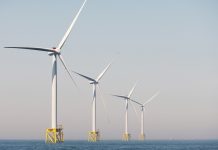The effort to fight the ongoing climate crisis is a task that isn’t down to a sole country, as every nation must play its part to reach the target of net zero by 2050.
While the roadmaps are clear, with over 400 milestones in place to achieve net zero, the United Nations (UN) has warned the world we are “woefully behind” for shorter-term targets in 2030. This will mean current plans for embracing and incorporating clean energy within industries, and at a consumer level, are being developed and are not just important but truly critical to meeting requirements for targets in 2050.
Dover Fueling Solutions, assess where the global charge is at on the road to Net Zero.
Road to 2050 by country
One of the main goals for countries worldwide is reaching carbon neutrality to curb the amount of carbon dioxide (CO2) released into the atmosphere. Currently, only six countries have reached this lofty goal, all of which are smaller countries with large stretches of forest that are uninhabited, including Guyana, Benin, and Gabon. These areas of land offset their carbon emissions significantly.
27 nations have carbon-neutral regulations written into their laws, including many developed countries throughout Europe, such as the United Kingdom, France, Germany, and Denmark. Similarly, 52 nations, such as Canada, South Korea, and China, have produced policy documents detailing how best their respective countries will achieve carbon neutrality but have not been formally made law.
The most concerning factor is that while countries review their carbon emissions, neutrality promises, and roadmaps, 47 countries have not set any net-zero targets. This equates to roughly 23.7% of countries, which could have a huge impact on the global effort to achieve this lofty goal and could even set other countries’ targets back.
An impressive factor is that a few multinational companies are ahead of the net zero targets of individual countries, even going as far as to set their own carbon neutrality goals for a much shorter timeframe. This includes Walmart and Amazon on track for neutrality by 2040, Apple for 2030, and Toyota racing towards a 2025 target year.
Tracking progress by country – who’s ahead So, where does each nation stand with its individual net zero goals?European countries are generally ahead of the rest of the world in their roadmaps to reaching their goals. In fact, from KPMG’s Net Zero Readiness Index from 2021, which found that the top five countries who are investing in net zero strategies are in Europe. Norway takes the top spot with the United Kingdom at second, Sweden and Denmark in third and fourth while Germany is at fifth. The first non-European country to appear on the list is Japan at seventh.
A great case study of a country making progress, but still having room for improvement outside of Europe, is China. As the largest energy consumer in the world, it ranks 20th globally for ‘net zero readiness.’
Energy and industry sectors within China are relatively far behind in the performance needed to reach net zero targets. Interestingly, the Chinese transport sector is ranked fourth behind Norway, Sweden and Germany which could be due to the performance and availability of public transport and an electric vehicle (EV) market that eclipses many others. In fact, China had nearly half of the global fleet in the country alone in 2020, with 5.4 million being used.
An element to reducing global emissions is adopting more alternative fueling solutions including hydrogen and EVs, which is increasing worldwide, particularly in Europe and China. The top five countries seeing a soaring in passenger EV sales in 2022 include Norway (80%), Iceland (41%), Sweden (32%), the Netherlands (24%), and China (22%). Meanwhile, the Asian market is leading the way in the uptake of hydrogen-fueled passenger cars with Korea emerging as number one and Japan aiming to have more than 800,000 hydrogen vehicles on the road by 2030.
There is still room for growth in the adoption of EVs, which will be necessary to hit the net zero targets set for 2050. This is outlined by the Paris Agreement Compatible Sectoral Benchmarks that EVs will need to see passenger vehicle sales increase from 75% to 95% by 2030.
Innovative substitutions for fossil fuels will need to be adopted to offset emissions, and hydrogen could be a hugely important aspect. It’s emerging as a sector to watch, with countries that contribute an enormous amount of carbon emissions investing heavily and making strides to include hydrogen in their future.
Overall, a definitive and positive change is being made and planned towards a net zero future, with credible targets and pledges being made by countries and companies around the globe. But by the UN’s standards, stronger commitments from the government will be required to hit net zero by 2050.




